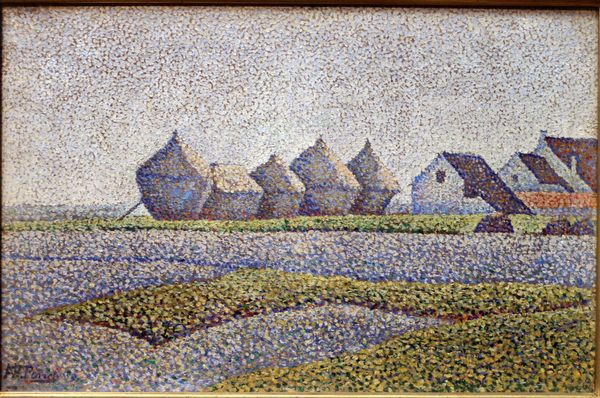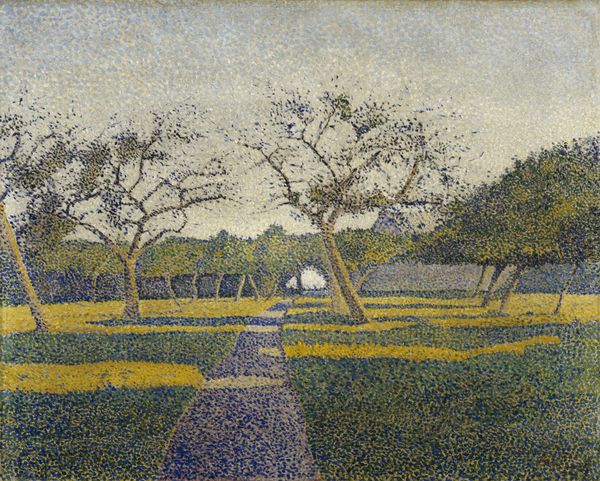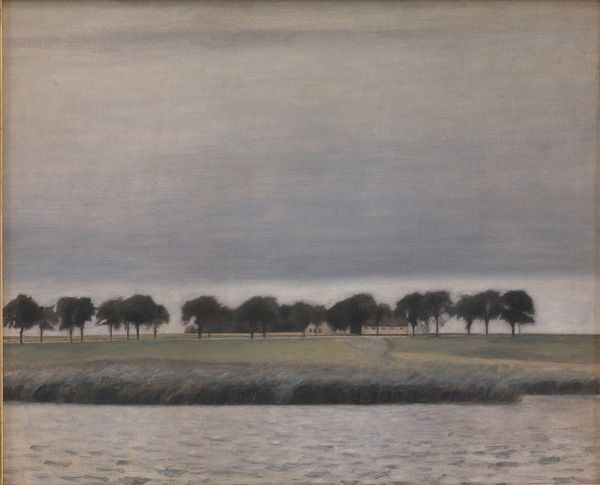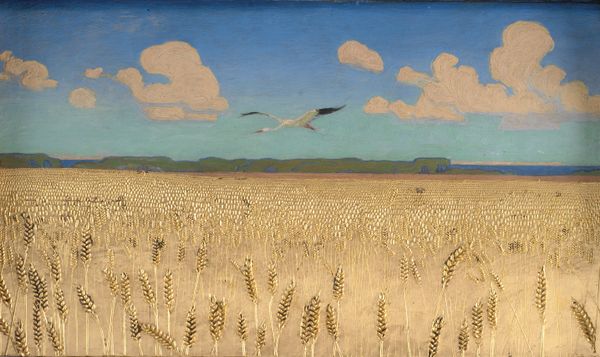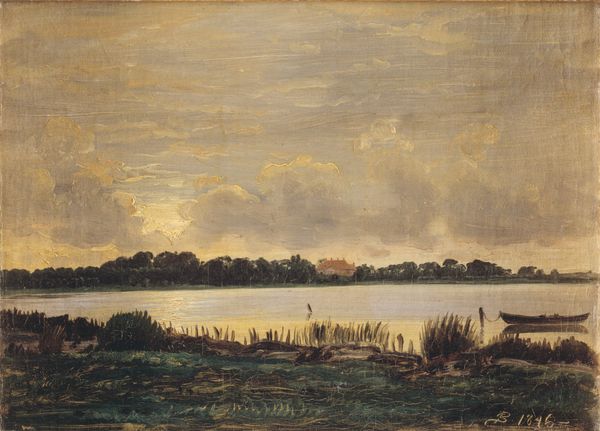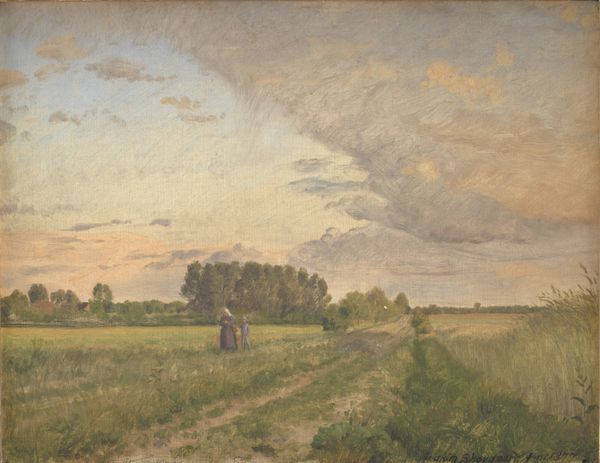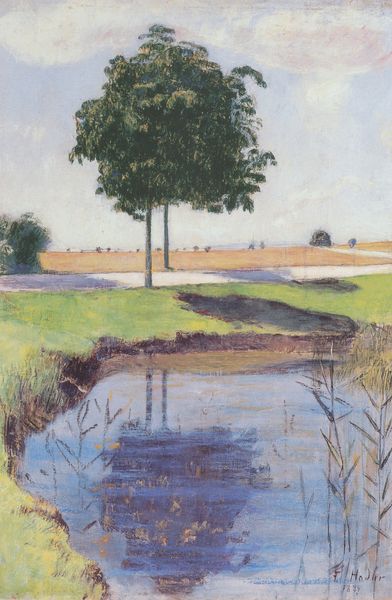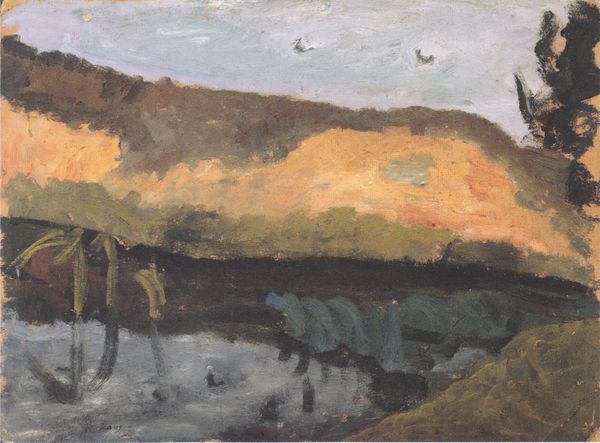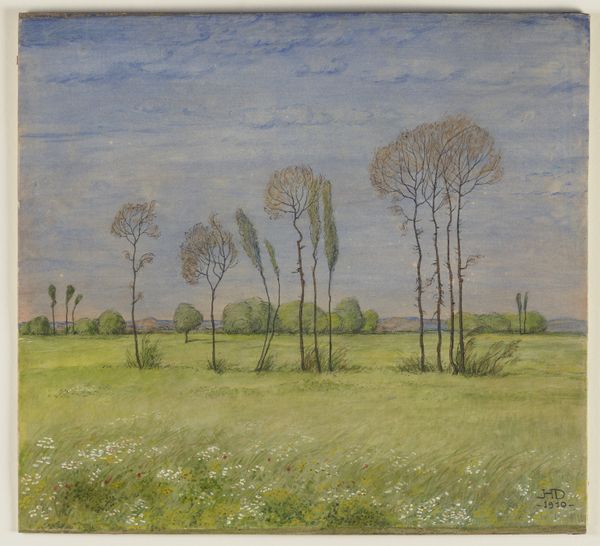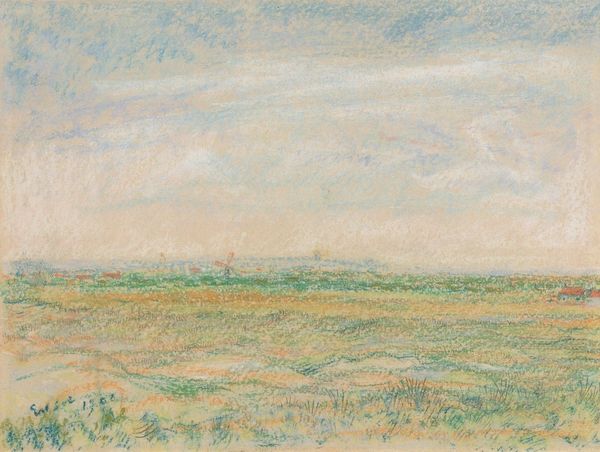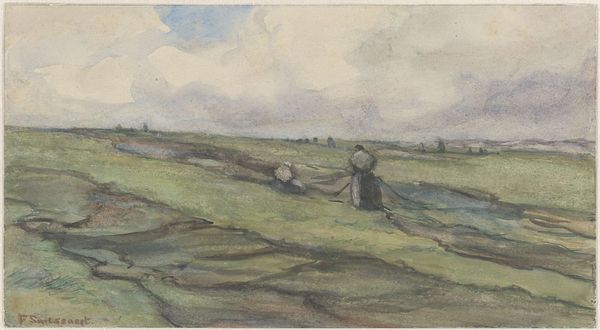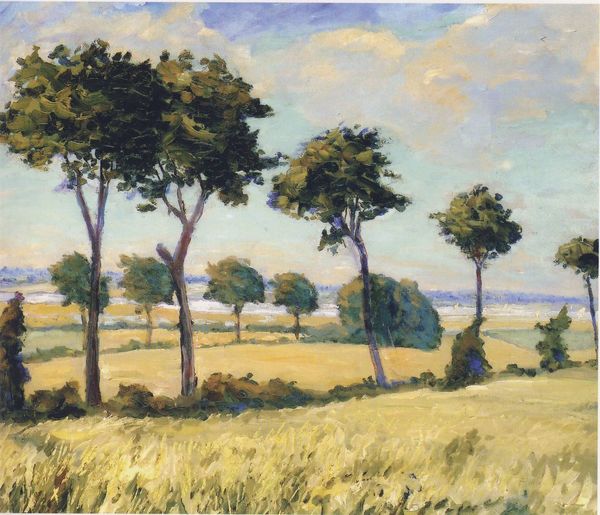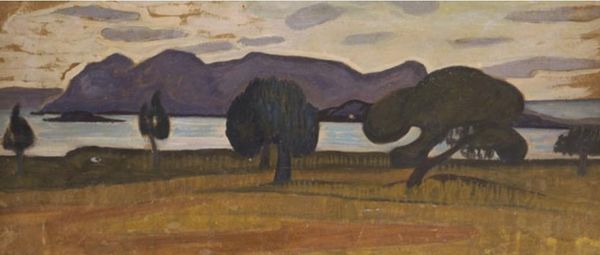
plein-air, oil-paint
#
impressionism
#
plein-air
#
oil-paint
#
landscape
#
figuration
#
oil painting
#
post-impressionism
#
watercolor
#
realism
Copyright: Public domain
Curator: Up next we have "The Road to Nieuport," painted in 1888 by Alfred William Finch. He used oil paints and worked in the plein-air style, which is really fascinating given the almost unreal stillness of the scene. What's your first impression? Editor: It feels… hushed. The muted palette and the way everything's built up from these tiny dots gives it this dreamy, almost suspended quality, like time is barely moving at all. Curator: Right? It's Impressionistic, yes, but also so much more. Those pointillist dots aren’t just about capturing light; they're like individual moments suspended in time. It gives everyday objects such as sheep or electrical pylons the look of an ethereal memory, fading as one tries to grasp it. Editor: And look how those pylons marching off into the distance echo the perspective of the road. Finch seems interested in superimposing these new technologies onto the old agrarian landscape. A flock of sheep contrasts to this straight line and represents more pastoral imagery. This kind of tension speaks to something about modernization itself, about change coming whether we like it or not. Curator: He’s really drawing on so many cultural elements. And in using a post-Impressionistic painting style, you can't help but consider how a symbol evolves. The dots create a sense of disintegration. Editor: It's fascinating how he uses such a delicate technique to depict this slightly unsettling scene. There is the lone, forward moving sheep interrupting this whole sense of peace with purpose. Curator: Agreed. Perhaps he's speaking to this singular path. You see it, or perhaps you're caught looking the other way. It really encourages a deeper look within, doesn't it? It prompts me to pause and reconsider what "progress" means to me, personally. Editor: Yes, and for me, it reinforces how images are encoded with anxieties and anticipations of the time. "The Road to Nieuport" encapsulates the ambivalence towards change through seemingly simple symbols like sheep, a road, and electricity pylons. Curator: Absolutely. Well, I know I'll be seeing sheep and pylons in a whole new light after this! Editor: And I know that these details remind me there is something deeper at stake within this image and cultural shift than meets the eye.
Comments
No comments
Be the first to comment and join the conversation on the ultimate creative platform.
